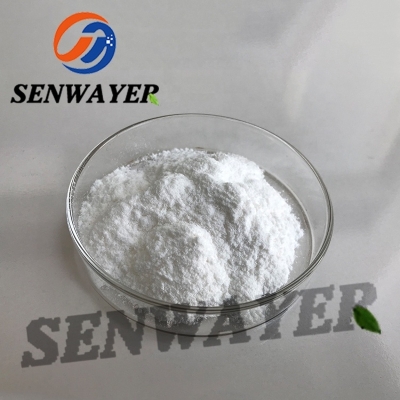Effective calibration of dust particle counter
-
Last Update: 2018-08-28
-
Source: Internet
-
Author: User
Search more information of high quality chemicals, good prices and reliable suppliers, visit
www.echemi.com
Dust particle counter is an important instrument widely used in the field of cleaning It is mainly used to evaluate the cleanliness level of clean room, and also used to detect the filter efficiency and the dust emission of clean fabric The industries used include electronic factory, pharmaceutical factory, medical device factory and testing laboratory, etc The dust particle counter uses the scattering principle of light to measure the number and size of dust particles in the air Working principle (Figure 1): the light from the light source is focused on the detection area by the mirror group, and the dust particle counter makes the sampling air pass through the area through the sampling pump When a dust particle (particle for short) passes through, it scatters the incident light once, and generates a light pulse signal After amplification and screening, the required signal is screened out, and then displayed through the counting system The height of the electric pulse signal reflects the size of the particle, and the number of signals reflects the number of particles The main technical indicators of concern are the size and number of particles The size of particles can be traced back to the standard particles, usually using polystyrene latex particles (PLS), which can be traced through scanning electron microscopy But the number of particles, it is difficult to have a reliable way of traceability The particles detected by the dust particle counter are difficult to catch, there is no effective way to count the number, nor to weigh Even if every step of sampling is well performed, the count display of different dust particle counters will still be very different The main reason is that there are differences in the design and performance of each dust particle counter, so the calibration of dust particle counter has always been a research hotspot and difficulty at home and abroad A large number of foreign literatures [2-5] have mentioned the concept of counting efficiency The so-called counting efficiency is the ratio of the number of particles displayed by the dust particle counter to the number of standard particles obtained from the aerosol sampled at the inlet of the dust particle counter The instruments with small measurable particle size < 0.2 μ m are classified as class A, and those ≥ 0.2 μ m are classified as class B Class a particle counter is a condensed core counter or a similar counter with no less than the same performance B can be obtained by taking class a counter as the standard The counting efficiency and specific index of counting efficiency: the traceability of dust particle counter to counting efficiency sub counter under small measurable particle size has not been solved, just the tacit approval of everyone, and has not become the benchmark In this method, a multichannel pulse amplitude analyzer is connected to the output of the dust particle counter to be tested (the output of the preamplifier or the input of the main amplifier) The standard particle generator is used to generate the experimental aerosol suitable for different particle sizes, analyze the pulse signals corresponding to different particle sizes, make the pulse frequency curve, and determine the response voltage of different standard particles The use of dust particle counters for calibration by comparison is also mentioned According to the demand of quantity traceability of dust particle counter, jjg547-88 "dust particle counter" was formulated in 1988 The accuracy of particle size distribution of dust particle counter was verified by using multi disperse standard particles, and the dispersion was measured by single disperse particles In this regulation, the direct verification of particle concentration is avoided, and the partial method is adopted, and all indexes are indirect values After years of efforts in 2008, the procedure was revised to jjf1190-2008 dust particle counter [7] The main technical indicators of the specification include appearance requirements, insulation resistance, electrical strength, self purification time, flow error, timing error, repeatability, particle size distribution error, particle concentration indication error, covering the basic performance of the measuring instrument, and taking into account the scientific and operational factors of the verification work The standard innovation proposes that the standard particle aerosol is produced by the standard particle generator, and the precision dust particle counter is used as the standard The calibration has always avoided but is extremely important: the indication error of particle concentration The key to the calibration of dust particle counter is standard particle generator, precision dust particle counter and data processing In the 1970s, China developed domestic dust particle counters, and began to study dust particle counters and calibration methods In 1985, gb6167.1 ~ gb6167.2-85 test method for performance of dust particle counter was formulated and revised in 2009 [6] In this standard, counting efficiency, particle size response voltage and comparison method are proposed by referring to relevant foreign literature It has a very positive significance for the factory debugging and product quality improvement of the production enterprise, but it is not suitable for the metrological verification department to carry out the metrological traceability (firstly, the metrological verification department's metrological traceability work is not allowed to dismantle the calibrated equipment) There is no national standard for the calibration of dust particle counter (not seen abroad), so the calibration of dust particle counter is very special and difficult The implementation of national standard jjf1190-2008 "dust particle counter" is beneficial to ensure the consistency of national measurement value and restrain the current market laissez faire situation
This article is an English version of an article which is originally in the Chinese language on echemi.com and is provided for information purposes only.
This website makes no representation or warranty of any kind, either expressed or implied, as to the accuracy, completeness ownership or reliability of
the article or any translations thereof. If you have any concerns or complaints relating to the article, please send an email, providing a detailed
description of the concern or complaint, to
service@echemi.com. A staff member will contact you within 5 working days. Once verified, infringing content
will be removed immediately.







